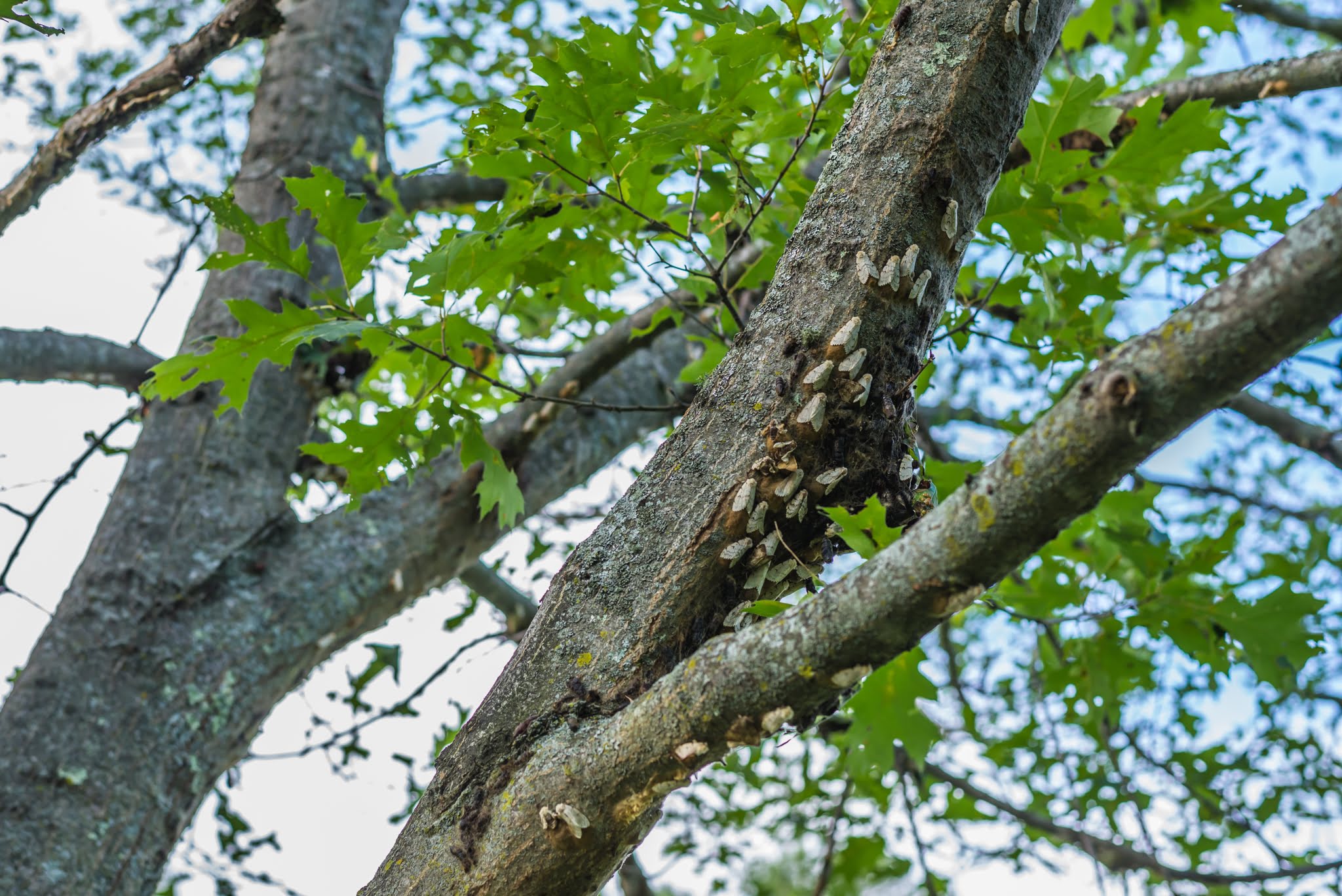What are Spongy Moths and Why Control is Needed?
Spongy moths, formerly known as Gypsy moths, are invasive pests that pose a significant threat to forests, urban landscapes, and agricultural areas. The larvae of spongy moths feed extensively on the leaves of trees, particularly hardwood species like oak, maple, and birch, causing severe defoliation. If left uncontrolled, these moths can weaken trees, making them more vulnerable to disease and other pests, and in extreme cases, lead to tree death. Controlling spongy moth populations is crucial to preserving tree health, protecting biodiversity, and avoiding the economic impacts of deforestation and timber loss.
Spongy Moth Control
Our spongy moth control program focuses entirely on biological control methods to reduce the pest population. We use Bacillus thuringiensis (Bt), a naturally occurring bacterium that specifically targets and kills spongy moth larvae while being harmless to other wildlife, plants, and beneficial insects. This biological control is applied during the early stages of the moth’s lifecycle, effectively preventing larvae from maturing into adult moths. By relying solely on biological methods, our program ensures an environmentally safe and effective approach to pest control that doesn’t disrupt local ecosystems.
Benefits of Our Spongy Moth Control Program
By using biological control exclusively, our spongy moth control program protects the ecosystem while effectively managing moth populations. These methods target the pests directly, reducing the risk of tree defoliation and tree mortality without harming non-target species or introducing harmful chemicals into the environment. Additionally, biological control methods are sustainable and promote long-term population management. Our approach helps preserve biodiversity, supports the health of forested areas, and reduces the economic and ecological damage caused by spongy moth infestations, all while maintaining the integrity of the surrounding environment.

